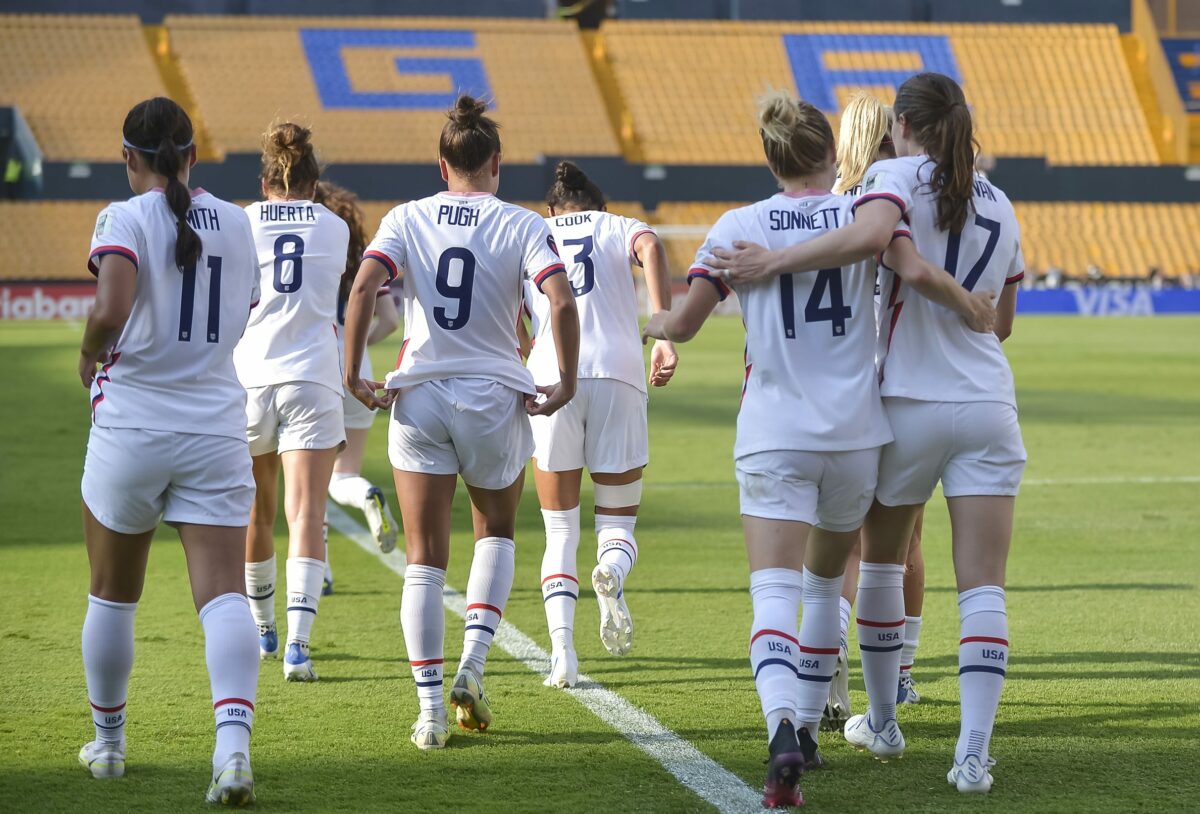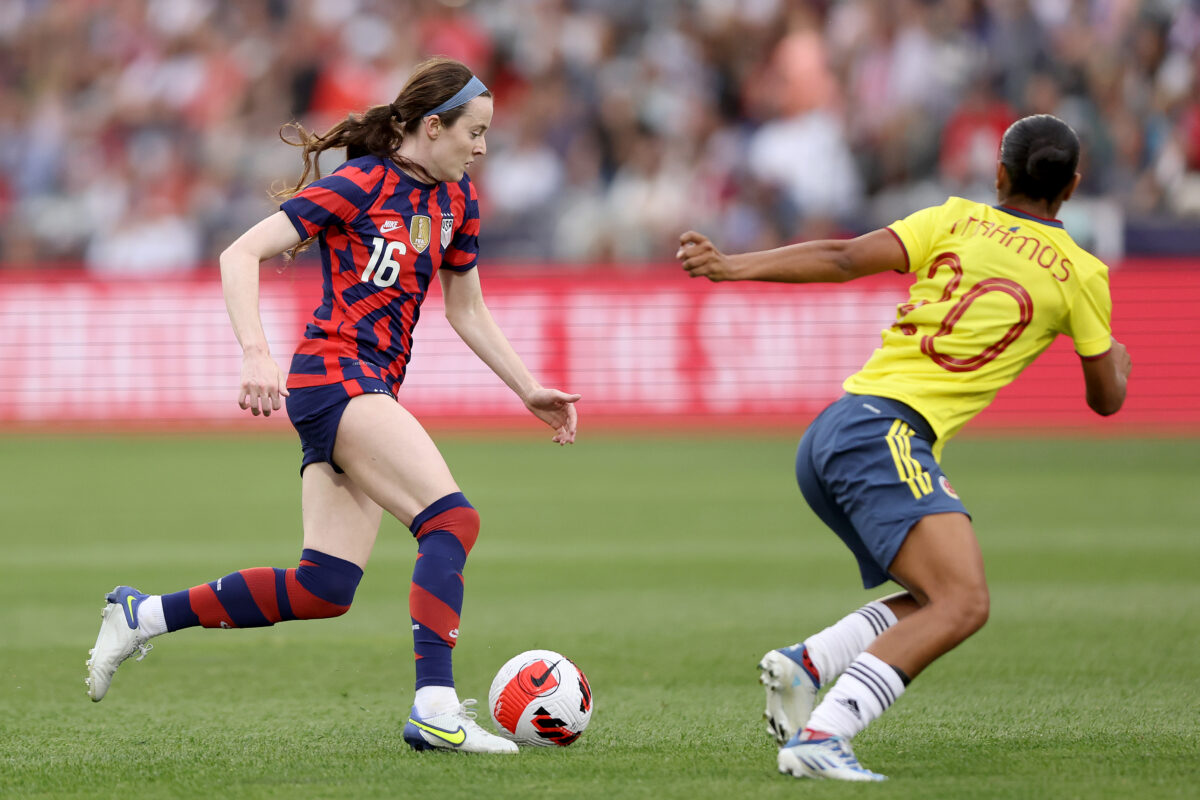What could have been a potentially difficult night ended up being rather pedestrian for the U.S. women’s national team, who had little to worry about in a 3-0 win over Costa Rica that sent them to Thursday’s CONCACAF W Championship final.
Goals from Emily Sonnett and Mallory Pugh late in the first half, after some big misses and a shot off the post from Alex Morgan, allowed the USWNT to preserve some energy in the second half, with Ashley Sanchez firing home a third just before the final whistle to put an exclamation point on the victory.
Despite the ease of the win, though, post-game reactions were a bit reserved, as the team expressed a focus on wanting to cut down on mistakes.
“I feel like we made too many technical mistakes that are a byproduct of our mental preparation,” Vlatko Andonovski said bluntly on the CBS Sports Network’s broadcast of the game.
In the press conference following the match, Andonovski expanded on that assertion. “I thought that we made too many technical errors. Too many for the players that were on the field, because we know that they’re technical,” said the USWNT head coach. “We know they can settle the ball and pass and execute different technical demands, even under a lot more pressure in pressing moments. But today, for some reason, we made like I said, a little too many (mistakes), and that’s something that we’re gonna look into, to see what it is.”
That’s not to say that the USWNT’s performance was poor, with a relentless counter-press effectively rendering the first half an offense vs. defense exercise. Getting into halftime with a two-goal advantage gave them a vital advantage going into the final: a less demanding second half.
“We went with the game plan from the defensive standpoint that I thought that we executed well when it comes down to reading the moments, and when we want to press and when we want to drop off a little bit and allow them to connect (a) few passes,” said Andonovski. “So as we’re playing this game, where the result goes in our way, we actually started changing a little bit on how we defend, and allowed them just slightly more touches on the ball, which was for us moreso ‘let’s not waste any any extra energy that we have to to win the ball back.'”
Facing an unfamiliar Costa Rica, who came out having rotated key starters in Raquel Rodríguez and Melissa Herrera and playing a 5-4-1 formation, Andonovski detailed aspects of his game plan that helped the U.S. make the game easier on themselves.
“We knew that we’re going to have to, per se, ‘borrow’ a player from the back to overload their backline, and we knew that it’s not going to be easy to execute, because we haven’t had an opportunity to work on that,” said Andonovski, alluding to a back four that saw Sofia Huerta often joining the attack while Sonnett stayed home. “We offset the build up a little bit, with the fullbacks, and build a little different way. But overall, I still think it worked well, because especially early on, we were able to create opportunities, we were able to score goals.”
Andonovski credited that back four—who helped keep Casey Murphy from facing any shots on goal, and only one shot at all—for remaining focused throughout, even as their job largely became about possession and tempo-setting with the ball.
“(Costa Rica) were playing so low and because they were bringing numbers a lot centrally, it was hard for them to transition out,” explained Andonovski. “It looked a little bit easy for our backline, but sometimes this is even a little bit harder, because they were only called out to defend in two or three instances. So they have to maintain 100% focus throughout the whole game, and I think that they executed defensively everything well.”
[lawrence-related id=4653,4540,4534]


